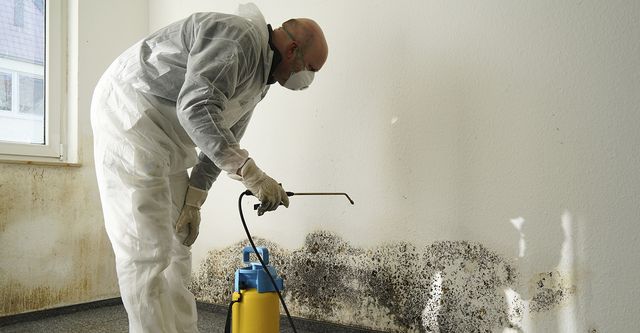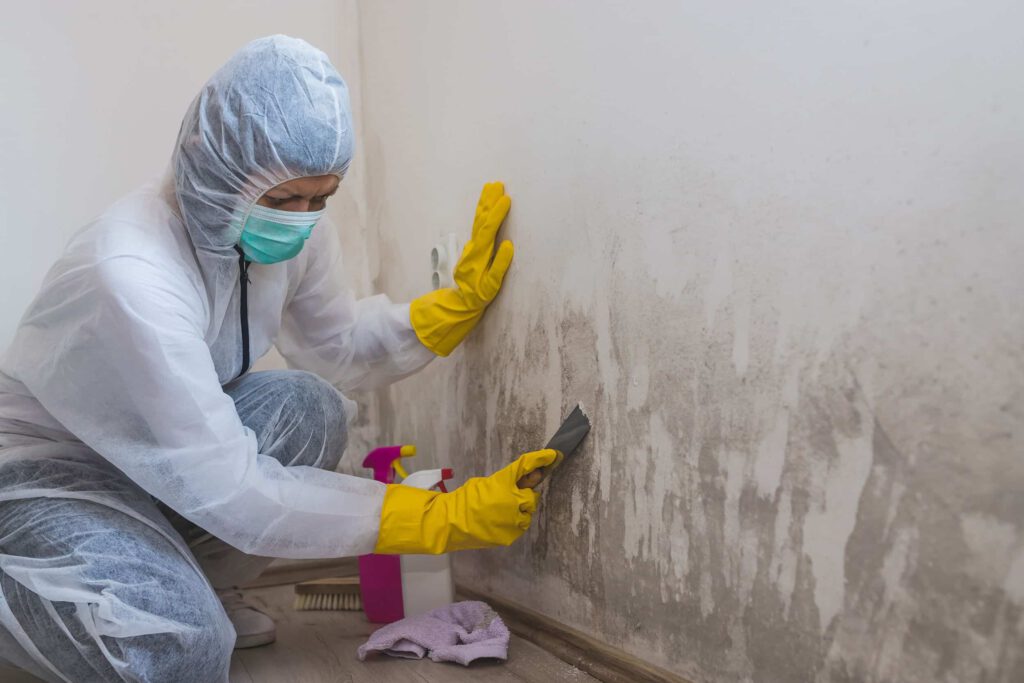Discovering mold in your home can be a worrying experience, not only due to its unsightly appearance but also because of the potential health risks associated with some types of mold. The first step to effectively treat and eliminate mold is identifying what types you’re dealing with. During professional inspections, various mold species can be uncovered, each with unique characteristics and implications for your home’s air quality and structural integrity. Whether it’s the infamous “black mold” or a less harmful variety, understanding the common types of mold found during inspections is crucial. This knowledge not only aids in effective remediation but also helps prevent future growth. Join us as we delve into the diverse world of mold species and their identification, empowering you with the information needed to tackle mold issues head-on.
Understanding Molds
Mold, which consists of tiny organisms, is a form of fungus that can be found nearly everywhere. It comes in various colors: black, white, orange, green, and purple. Mold thrives on moisture and reproduces through tiny, airborne spores. These spores can be released into the air and land on surfaces, where they grow when the conditions are right, especially in damp, warm environments. Mold plays a crucial role in nature by breaking down dead organic matter, but it can cause problems when it grows indoors.
Importance of mold inspections
Conducting mold inspections is crucial for ensuring a healthful living space. They can help identify hidden mold growth, prevent mold-related severe health issues, and protect the structural integrity of your home. During an inspection, professionals look for signs of dampness, water damage, and visible mold. They may also take air and surface samples to identify the types of mold present and determine the spore count in the air. Knowing what kind of mold you’re dealing with can guide the removal process and prevent future growth.
Common Types of Mold
Let’s dive into some of the most common types of mold that might be identified during a thorough inspection.
Black mold
Often referred to as “the notorious mold,” black mold, or Stachybotrys chartarum, is one of the most infamous mold species. It’s recognizable by its slimy black appearance and can be found in areas of the home with high moisture levels, such as bathrooms or basements with water damage. Despite its sinister reputation, the health effects of black mold exposure are similar to other molds, including coughing, sneezing, and irritation to the eyes and skin. However, its presence indicates a significant moisture problem that needs addressing.
Aspergillus
Aspergillus, a prevalent type of mold, can be discovered in both indoor and outdoor environments. It’s usually not a problem outdoors, but it can cause allergic reactions and respiratory infections in some people when it grows indoors. Aspergillus can appear in various colors and is often found on walls, insulation, and paper products. Because it can grow in less damp conditions than many other molds, it can be particularly pesky to get rid of.
Cladosporium
Unlike molds that prefer the warm, steamy environments of your shower curtain or basement walls, Cladosporium has a penchant for more excellent areas. This type of mold can be green, brown, gray, or black and often looks like a suede. It is commonly found in fabrics, wood, and other porous materials. Cladosporium can cause various allergic reactions, from skin rashes to wheezing, and it’s another reason to stay on top of humidity levels at home.
Molds are a natural part of our environment, but when they move into our living spaces, they can cause problems. Identification through mold inspections is the first step in managing these sneaky intruders. Knowing what you’re dealing with is critical to maintaining a healthy, happy home, whether it’s the dreaded black mold, the prolific Aspergillus, or the cool-loving Cladosporium.
Identifying Mold Species
Understanding the characteristics and growth patterns of various types of mold lurking in homes or buildings is essential for recognizing them. This knowledge not only aids in identifying the species present but also determines the necessary steps for removal and prevention.
Mold characteristics
Mold can appear in many colors, shapes, and sizes, making it somewhat easier to identify with professional help. Standard colors include black, white, green, or yellow. The texture may vary from fuzzy to slimy, depending on the species and its environment. Its musty odor is an unmistakable sign of mold, which can help detect mold growth even when it’s not visibly apparent. By paying close attention to these characteristics, you can gain insight into the type of mold you’re dealing with.
Mold growth patterns
Understanding the specific conditions in which mold thrives can also guide identification. Mold loves moist, damp environments, so areas with water damage, high humidity, or condensation are hotspots for mold growth. Different species of mold have preferences for certain materials, like drywall, wood, carpet, or insulation. Their growth patterns—whether they spread quickly or remain confined to small areas—can provide clues about the type of mold present. Recognizing these patterns requires careful observation and, sometimes, the expertise of mold identification professionals.
Types of Mold Testing
When suspicions of mold arise, testing becomes an invaluable step in confirming its presence, identifying the species, and understanding the extent of the infestation. Various testing methods exist, each serving a unique purpose in the investigative process.
Air sampling
Air sampling is a popular method for detecting mold spores in the air. This method involves capturing air samples from various locations within a building and analyzing them in a lab to identify the types and concentrations of mold spores. Air sampling can help determine the air quality and whether mold levels are higher indoors than in the outdoor environment, suggesting an indoor mold infestation.
Surface testing
As the name suggests, surface testing involves samples from surfaces where mold is visible or suspected. This can be done through swabbing, tape lifts, or other methods that collect a sample for further analysis. Surface testing is beneficial for identifying the specific species of mold on a surface and assessing the level of contamination. This method helps decide the appropriate remediation techniques based on the type of mold identified.
ERMI testing
Environmental Relative Moldiness Index (ERMI) testing is a more advanced approach that uses dust samples from a building to assess the potential risk of mold-related health effects. The sample is analyzed for the DNA of specific mold species that cause health issues, providing a comprehensive profile of the mold situation. ERMI testing is especially beneficial for individuals with health concerns related to mold exposure, offering a detailed evaluation of the indoor environment’s safety.
By understanding mold’s unique characteristics and growth patterns, alongside employing various testing methods like air sampling, surface testing, and ERMI, individuals can better navigate the challenges of mold identification and remediation. This knowledge is crucial for maintaining a healthy and mold-free environment.
Health Risks Associated with Mold Exposure
Exposure to different types of mold can pose various health risks, affecting individuals differently based on their sensitivity and underlying health conditions. Understanding the potential health implications of mold exposure is critical to recognizing the importance of preventing and addressing mold growth effectively.
Respiratory Issues
Inhaling or being near mold can lead to a range of respiratory issues. Common symptoms include coughing, wheezing, throat irritation, and nasal stuffiness. For individuals with asthma or other pre-existing respiratory conditions, mold exposure can exacerbate these conditions, leading to more severe symptoms and potentially dangerous respiratory complications. This underscores the need to promptly identify and address mold problems, particularly in environments inhabited by individuals with respiratory vulnerabilities.
Allergic Reactions
Mold exposure is a common trigger for allergic reactions, varying in severity from person to person. Symptoms of a mold-related allergic reaction may include skin rashes, red or itchy eyes, and sneezing. For those with severe mold allergies, these reactions can be more intense and require medical intervention. Identifying the presence of mold early can help mitigate exposure and reduce the risk of allergic reactions, especially in individuals known to have allergies.
Long-term Health Effects
The long-term health effects of mold exposure are an area of ongoing research, but evidence suggests that prolonged exposure to certain mold types, like black mold, can have profound health implications. This can include chronic respiratory conditions, ongoing allergic reactions, and, in some cases, immune system suppression or neurological symptoms. These potential long-term health implications highlight the importance of addressing mold issues as soon as they’re detected to minimize exposure and protect health over time.
Preventing Mold Growth

Preventing mold growth is essential to maintaining a healthy living environment and minimizing the health risks of mold exposure. Here are some effective strategies to prevent mold in your home.
Moisture Control
Since mold thrives in moist environments, controlling moisture levels is critical. Use dehumidifiers in damp areas like basements and ensure that spills or leaks are cleaned promptly. Additionally, properly sealing windows and doors can help prevent moisture from infiltrating your home from outdoor sources. Keeping humidity levels within your home between 30% and 50% can significantly reduce the risk of mold growth.
Proper Ventilation
Ensuring adequate ventilation throughout your home can prevent mold by reducing moisture levels and improving air quality. Use exhaust fans in high-humidity areas such as the kitchen, bathroom, and laundry. Opening windows and using fans to circulate air can also help in damp or mold-prone areas.
Regular Inspections
Regular home inspections for signs of mold or moisture issues are vital. This includes checking common areas where mold tends to grow, such as basements, attics, and around windows and plumbing fixtures. Early detection is essential for preventing mold growth and the associated health risks. If mold is found, professional removal and remediation can prevent it from spreading and causing further issues. Establishing a routine of regular inspections can help catch potential mold infestations early, ensuring a healthier home environment.
Conclusion
When it comes to mold inspections and testing, encountering one of the several types of mold is not uncommon. From the omnipresent Aspergillus to the notorious Stachybotrys chartarum, each species has its preferred environment and potential health risks. Identifying and addressing mold presence is crucial for the structure of your home and the health and well-being of its occupants.
Armed with this knowledge, you are more prepared to address mold-related issues within your home. The key to managing mold is preventing its growth in the first place, which means controlling humidity levels, fixing leaks promptly, and ensuring proper home ventilation. Should you suspect mold, consider contacting a professional for thorough inspection and testing to ensure your living environment is safe and healthy.
Contact Mold Testing Houston Today for a Comprehensive Mold Inspection
Mold inspections services in Houston TX are crucial for identifying and treating different types of mold found in homes. Mold is a fungus that thrives on moisture and reproduces through tiny, airborne spores. Common types of mold found during inspections include the notorious black mold, Aspergillus, and Cladosporium. Identifying mold species is essential for effective remediation and prevention. Mold can appear in various colors, shapes, and sizes, and it favors moist, damp environments, making areas with water damage, high humidity, or condensation hotspots for growth.
Don’t let mold go undetected and become a more significant issue. Reach out to Mold Testing Houston today, and let’s schedule a comprehensive mold inspection for your home. Together, we’ll address mold concerns and pave the way for a healthier, mold-free environment.






